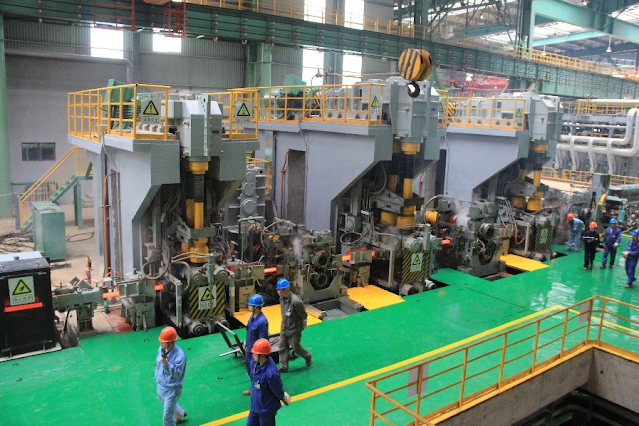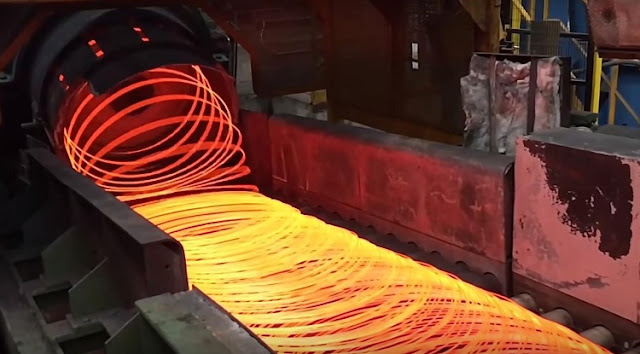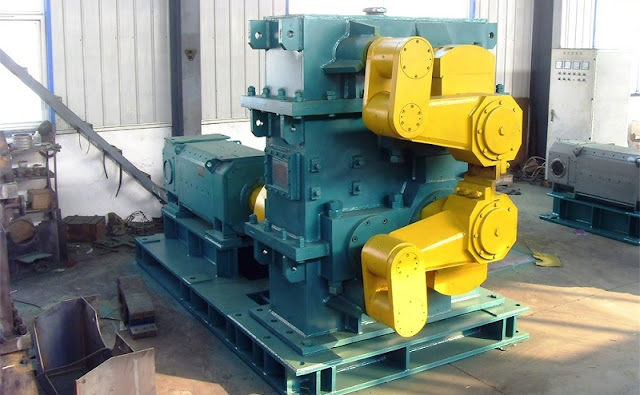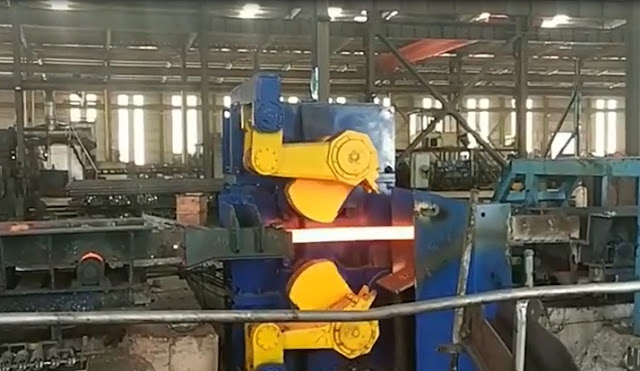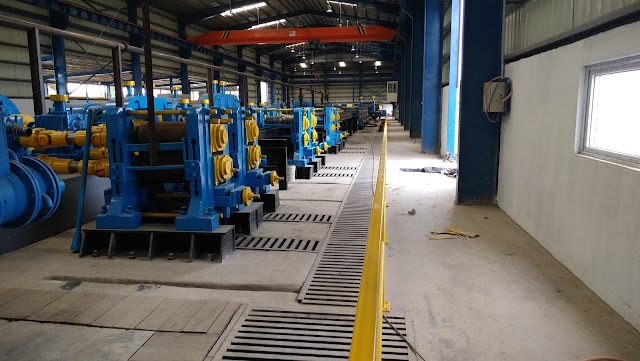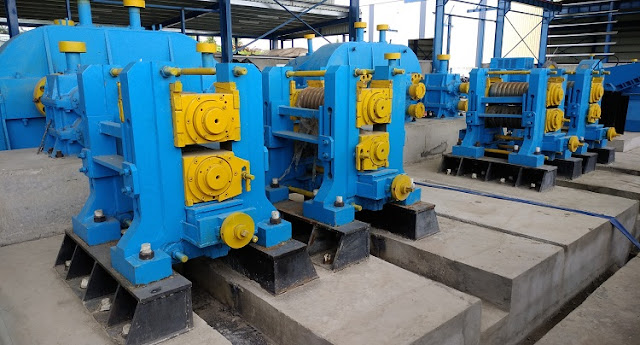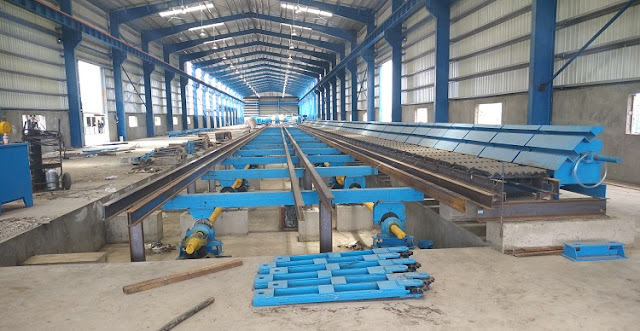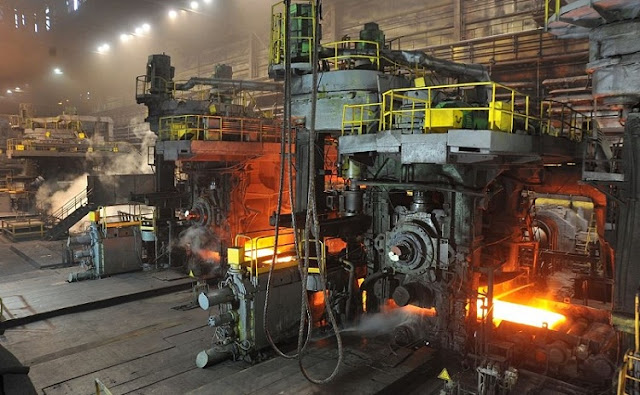Mini-Metallurgical Plant and 600,000 TPY Rebar Rolling Mill | Section Mill for Sale
The Minimill plant is composed of Melting & Refining shop
FastArc TM AC 70 t tapped steel
Ladle Furnace LF 70 t
Single-tank/single-cover VD/VOD station
FTP for EAF & LF primary and secondary fumes.
Melt shop auxiliary facilities
Continuous Casting Plant:
3-strand Danieli FastCast TM billet continuous casting machine
Rolling Mill:
80-t/h (or 100-t/h in hot charge) Bar and Light Section Mill
70-ton Ladle Furnace (12/14 MVA transformer).
70 ton VD/VOD station, single-tank, single-cover type.
Raw material handling/charging system for EAF,LF and VD
Fume Treatment Plant for primary and secondary fumes for EAF and LF E C B
The Meltshop:
A -Arc EAF 70-ton tap weight (64/74 MVA transformer), 5.3-m shell dia, equipped with the latest generation of wall-mounted oxygen/carbon injectors. The casting of specialty and stainless steel ingots
B -70 ton Ladle Furnace (12/14 MVA transformer).
C -70 ton VD/VOD station, single-tank, single-cover type.
D - Raw material handling/charging system for EAF, LF, and VD
E - -Fume Treatment Plant for primary and secondary fumes for EAF and LF
F - 3-strand, 9-m-radius FastCast Continuous Casting Machine, for high-speed casting of 130x130, 150x150,180x180-mm quality billets. Direct connection to the rolling mill reheating furnace, for hot-charging operation
PLANT CAPACITY: 500,000 tpy in cold-charge mode(*) Up to 600,000 tpy, in hot-charge mode
STARTING MATERIAL: Billet 150 x 150 x 12,000 mm
180 x 180 x 12,000 mm Weight 2,000 kg and 3,000 kg
STEEL GRADES: Low carbon, concrete reinforcing, low/medium alloy steels
FINISHED PRODUCT: Rounds (RB) from 16 to 50 mm dia
Deformed Bars (DB) from 10 to 40 mm dia, 4- strand slitting on DB 10, 12 mm dia 2- strand slitting on DB 14, 16 and 18 mm dia
Squares from 14 to 40mm, Flats from 30x6 to 80x25mm; Angles(equal) from 30x3 to 50x7mm; C profiles form 4 to 5
FINISHING SPEED: Up to 12 m/s
PRODUCT TOLERANCES: According to Local and International Standards
FINISHED PRODUCT SUPPLY: Straight Bar Bundles Length 6,000 to 12,000 mm Weight 1,000 to 5,000 Kg
(*) Yearly capacity based on a 3 daily shifts working schedule
Reheating furnace: Walking Hearth type capacity 80 t/h (or 100 tph in hot charge)
Roughing Mill: 8 AC driven ESS compact cantilever stands 820/685/585 mm dia in H and V configuration
Intermediate Mill: 6 AC driven SHS housingless stands 475 mm dia in H and V configuration.
Finishing Mill: 6 AC driven SHS housingless stands 430 mm dia in H, V and H/V convertible configuration equipped with automatic quick-changing system
In-line QTB treatment for high tensile deformed bars
Cooling Bed: Rake type Dimensions 54 x 13m equipped with a water spray system
Finishing Services: CLS on-line start&stop Straightening and Cut-to-Length system (multistrand straightener and shear), bundling service, final tying and collecting services
DANIELI AUTOMATION fully integrated system for process technology and equipment control
Please contact
stella@hanrm.com for quotation.
And free send inquiry to us.
Whatsapp/Wechat:+8615877652925
Website:
https://www.hanrm.com

More News You May Interesting:
Why does the Steel Bar Bend after being Cut by Flying Shear?
Morgan Wire Rod Mill
Headless Welding Rolling Process
Bar Rolling Mills Water Cooling Technology
How to Improve the Thermal Efficiency of the Reheating Furnaces?
Causes of Surface Cracks in High-Speed Wire Rod Rolling Mill
What is Slit Rolling?
Failure Analysis of Cold Mill Roll
Causes and Solution of Steel Piling-up in High-speed Wire Rod Rolling Mills?
Bar Automatic Counting System
Rolling Mill Pass Design


